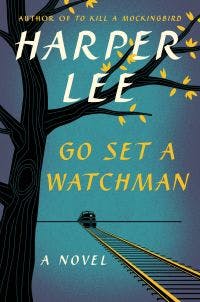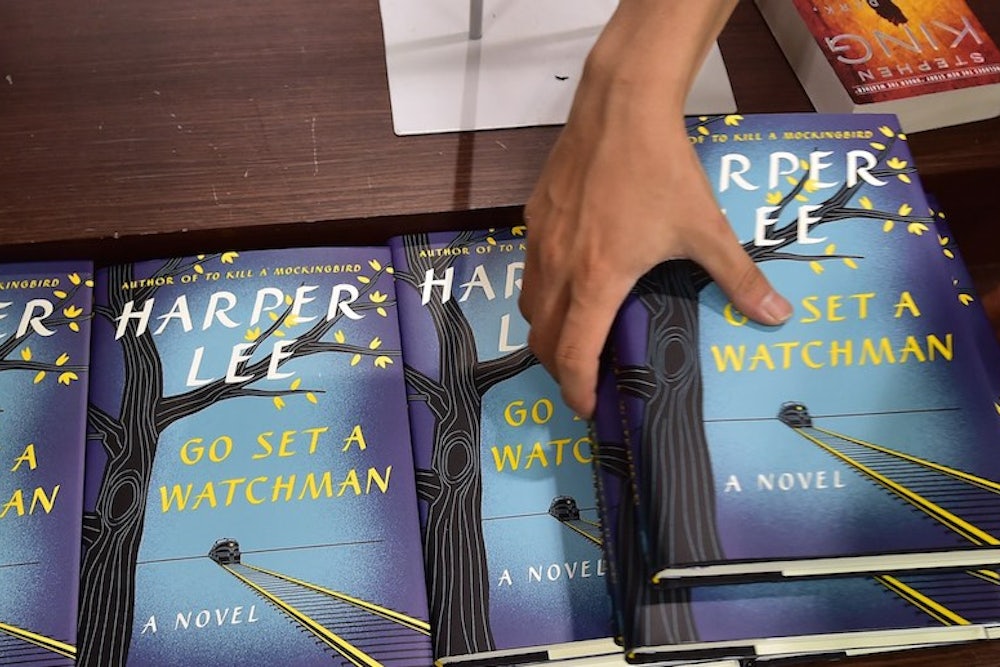This piece is the third in a three-part series we’ll be publishing this week on Harper Lee, To Kill a Mockingbird, and Lee’s new novel, Go Set a Watchman. Here are the first and second installments.
When Hemingway's unfinished novel True at First Light was published in 1999, we saw a brooding of editorials and essays about the ethics of publishing it, about what the author might think of the tarnishing caused by a lusterless draft he wouldn’t have let anyone glimpse. Some Hemingway disciples were irked and hurt on behalf of the once heroic craftsman, but that irk and hurt seems somewhat mirthful when you compare it to what crowds of readers are feeling this week on behalf of Harper Lee. Hemingway had been dead nearly four decades when True at First Light appeared—Harper Lee is still alive in Monroeville, Alabama.
According to the meticulously researched biography by Charles Shields, in January of 1957 Lee went to see her agent, Maurice Crain, with “the first fifty pages of a novel, Go Set a Watchman.”
A week later, she was back again, this time with a hundred more pages. From then on, she dropped off about fifty new pages with Crain every week through the end of February. Two months of back-and-forth revisions followed between author and agent until, in early May, Crain judged that the manuscript was in suitable shape to send out. But he had never liked the title Go Set a Watchman.
Crain sent the book to the publisher J. P. Lippincott. Tay Hohoff, the editor, later said of that draft: “It was more a series of anecdotes than a fully conceived novel,” but she was interested enough to give Lee a contract. After Lee rewrote the book based on Hohoff’s suggestions, the next draft “was better. It wasn’t right. … There were dangling threads of plot, there was a lack of unity.” It then took another two and a half years to make what we know now as To Kill a Mockingbird.

That “series of anecdotes” with the “dangling threads of plot” and “lack of unity”? That’s the book the world is reading this week. In a conscious confusion of purity for quality, HarperCollins boasted that they were publishing Watchman unedited—as if they could have done anything else, short of rewriting it themselves: The author cannot see or hear.
The story is slender: Jean Louise Finch, now 26 years old and living in New York, trains home to Maycomb, Alabama, to visit her ailing, 72-year-old father, Atticus Finch, and her childhood love and maybe future husband, Henry (Hank) Clinton. Her brother, Jem, so beloved by readers of Mockingbird, has died of the same heart calamity that felled their mother. There follow sedating, brochure-like stretches about the history of the county and the town, and numbing banter between Jean Louise and her Aunt Alexandra. You’re then subjected to a tour of the town and some of its Colorful Characters.
Then Jean Louise finds a booklet on her father’s desk, The Black Plague, the cover of which shows a drawing of “an anthropophagous Negro.” Incensed, she rushes off to the courthouse where Atticus and Henry are taking part in a citizens’ council meeting. Hidden in the balcony—you’ll be reminded of how the children sat in that very balcony during Tom Robinson’s trial in Mockingbird—she eavesdrops on a cataract of white-power propaganda, of which her father and sweetheart seem to approve. She then spends the rest of the book obnoxiously outraged, hysterically haranguing her father and her beau, flitting about with all the crusading zest of the holier-than-thou, the affectations of an adolescent who’s just discovered the idealism of social justice.
Just as she’s about to leave town for good, her Uncle Jack backhands her in the mouth and feeds her whiskey, and this, against everything you know about human behavior, brings Jean Louise Finch straight back to her senses. In an epic unloading of casuistry, both her father and Uncle Jack have convinced her that Maycomb’s new white-on-black animus isn’t really bigotry, just (white) citizens rightly concerned about their own heritage and not keen on Washington or the NAACP meddling in their self-governance. If you could further pollute Donald Trump with the blather of Ayn Rand, you’d have someone who looks a lot like the Atticus Finch of Go Set a Watchman.
Ponderous and lurching, haltingly confected, the novel plods along in search of a plot, tranquilizes you with vast fallow patches, with deadening dead zones, with onslaughts of cliché and dialogue made of pamphleteering monologue or else eye-rolling chitchat. You are confronted by entire pages of her Uncle Jack’s oracular babble, and you must machete through the bracken of listless, throw-away prose in order to get to a memorable turn of phrase. “Jean Louise smiled to herself” and “Jean Louise laughed aloud” and then “Jean Louise shook her head” before “Jean Louise’s eyebrows flickered.” Someone has “green envy,” and someone else “worked night and day,” while someone “dropped dead in his tracks” and someone else was “bored stiff.” Soon, “Henry looked at her” and then “she looked at him” and then “Hank stirred” before “she stirred.” Then “she bit her tongue” right before “she held her tongue.” Characters "raise" their "eyebrows" so often you have to question how their foreheads turned to trampolines. When Jean Louise gets upset, which is always, her “throat tightens,” and you wonder how she breathes through such frequent esophageal constriction. Some good prose survived the voyage from Watchman to Mockingbird—Aunt Alexandra’s corset “drew up her bosom to giddy heights”—and you turn pages praying to find more of it. Those prayers, like all prayers, aren’t answered.
For once, none of those flaws in the novel can be blamed on the author: She was learning how to write when she composed Watchman, and wasn’t able to ready this draft for publication. In the two and a half years it took her to turn this mess into To Kill a Mockingbird, she evolved beautifully as a stylist and storyteller, helped along by an astute editor. It’s impossible to believe that a sound Harper Lee wished for this thing to be published, impossible to believe that her sister-protector, Alice Lee, would have allowed it to happen. This befouling book does not come close to meeting the immoderate predictions of its publisher (a “masterpiece” that “will be revered for generations to come”). It should have been permitted to retain its quiet dignity boxed in the author's archives. The manuscript might have been mildly nourishing for future tweeds in search of tenure, but it should never have been expensively packaged, gaudily hyped, unscrupulously employed as chum to lure lovers of Mockingbird.
The challenge for a white author with a racial subject is to get through the door without getting on the hook—to be on the side of truth while skirting the exploitation of stereotype—and in both Mockingbird and Watchman, Lee's response to that challenge isn't always applaudable: Her stereotypes can be white when they aren’t black. What Harold Bloom said of Mockingbird cannot be said of Watchman: “The book is refreshingly free of ideologies and of the need to revise history to suit some particular politics of the spirit.” Watchman contains no moment that can match the tremendous affection, the familiarity and inevitability of when in Mockingbird Scout is at last able to say to her mysterious neighbor: “Hey Boo.” Harper Lee wrote To Kill a Mockingbird in "the gigantic shadows which futurity casts upon the present," as Percy Shelley put it in a different context. And futurity, I’m certain, will forgive Go Set a Watchman. I’m not at all certain that it will forgive those who conspired to sell it to us.
